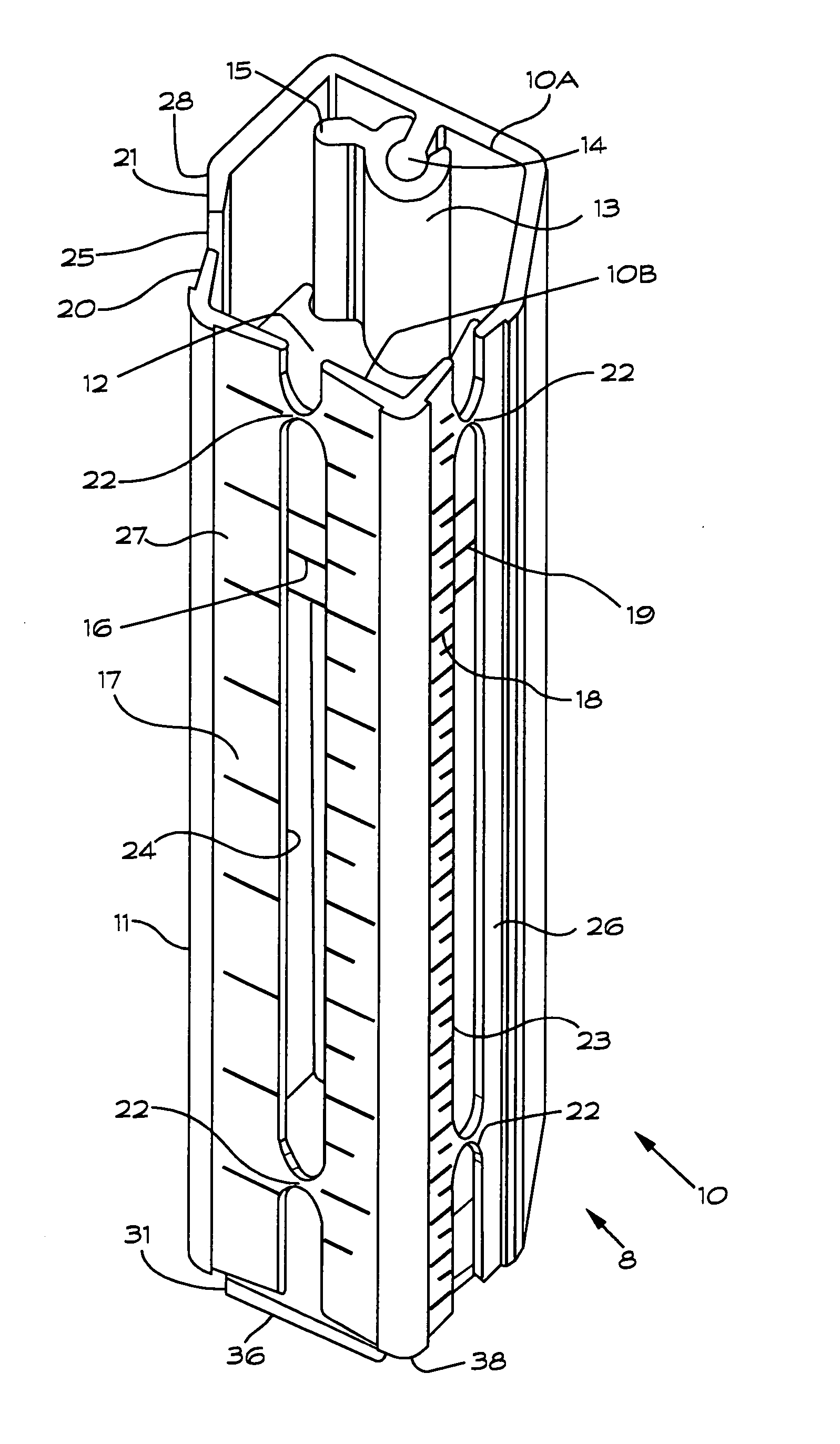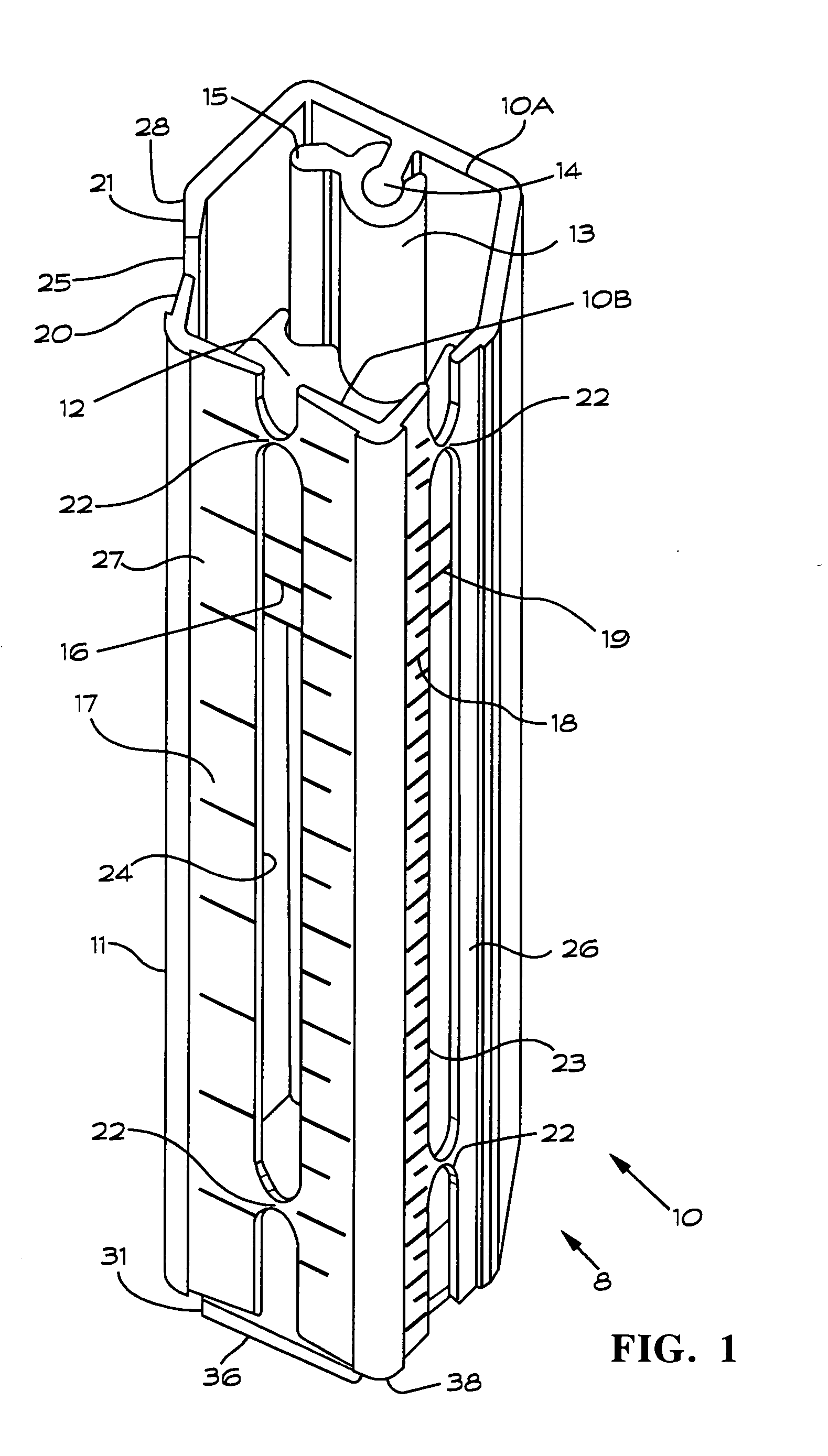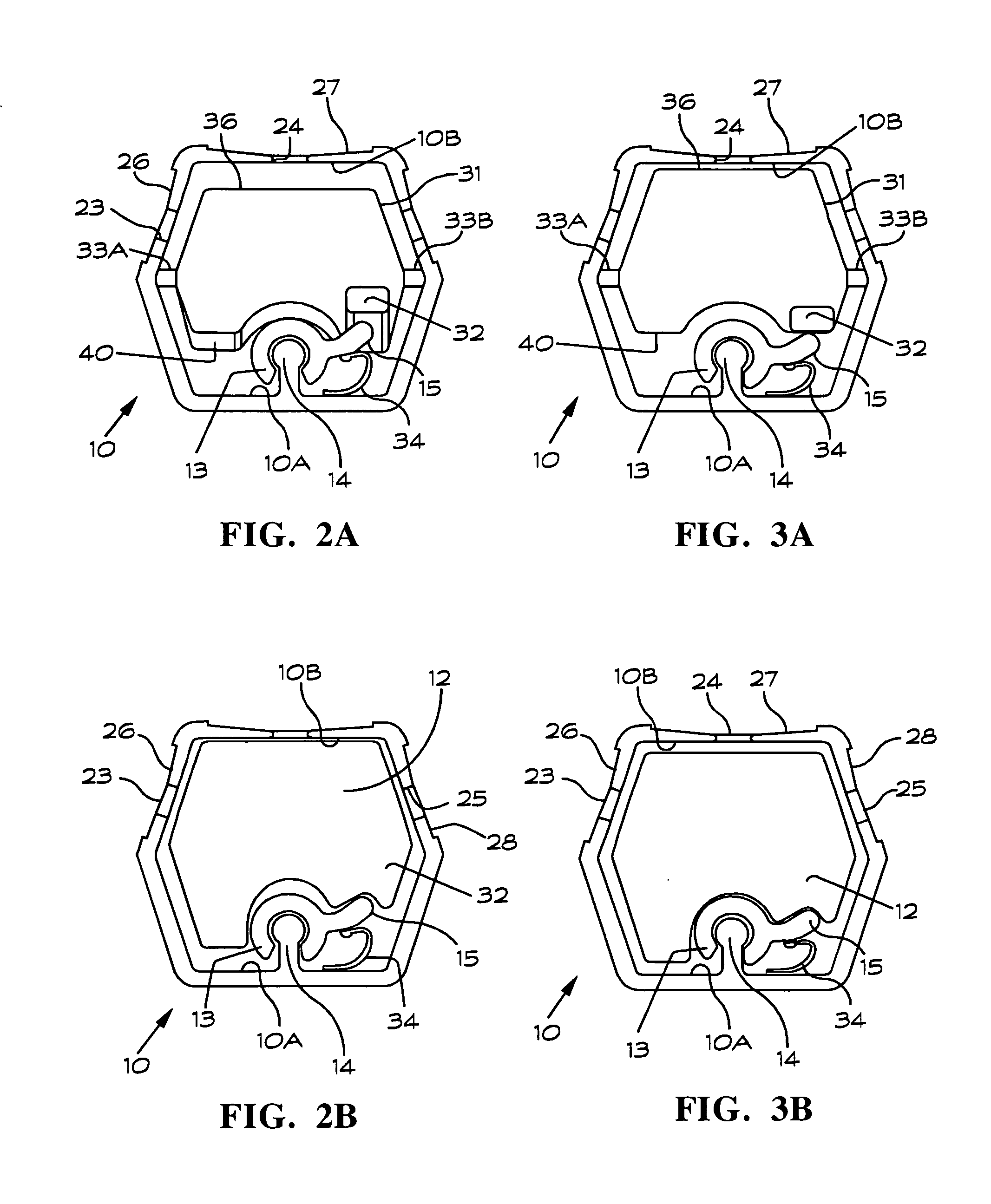Mechanically self actuated liquid level sensor
a self-actuating, liquid level sensor technology, applied in the direction of liquid/fluent solid measurement, machines/engines, instruments, etc., can solve the problems of erroneous reading, inconvenient measurement of liquid level, measuring float jamming in the tube, etc., to achieve the effect of eliminating the rotation feature of the handl
- Summary
- Abstract
- Description
- Claims
- Application Information
AI Technical Summary
Benefits of technology
Problems solved by technology
Method used
Image
Examples
Embodiment Construction
[0018] As shown in FIG. 1, a liquid level sensor 8 according to the invention has a frame 10. The frame 10 may have an elongate generally tubular configuration with a generally hexagonal shaped cross section. The frame 10 typically has a length of five to seventeen feet to be suitable for measuring liquid levels in underground and surface mounted tanks (not shown). The shorter version has application to measuring liquid levels in barrels. The form of the cross section of the frame 10 is best seen in FIGS. 2A, 2B, 3A, and 3B. The frame 10 is not limited to the cross section shown in the drawings. The invention may be readily practiced using a frame having other cross sectional shapes such as circular, triangular or rectangular, for example, depending on applications and user preferences.
[0019] The frame 10 has an inner wall 10A on which an extended cam pivot 14 is attached. A float lock guide cam 13 is pivotally attached to the extended cam pivot 14 as shown. Both the extended cam p...
PUM
 Login to View More
Login to View More Abstract
Description
Claims
Application Information
 Login to View More
Login to View More - R&D
- Intellectual Property
- Life Sciences
- Materials
- Tech Scout
- Unparalleled Data Quality
- Higher Quality Content
- 60% Fewer Hallucinations
Browse by: Latest US Patents, China's latest patents, Technical Efficacy Thesaurus, Application Domain, Technology Topic, Popular Technical Reports.
© 2025 PatSnap. All rights reserved.Legal|Privacy policy|Modern Slavery Act Transparency Statement|Sitemap|About US| Contact US: help@patsnap.com



